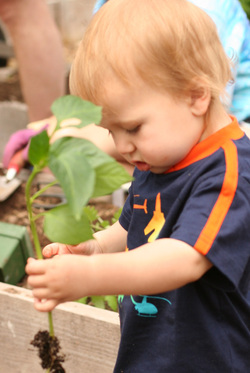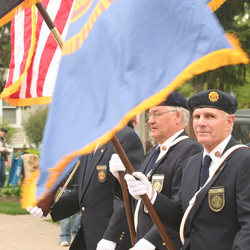http://scarsdale.patch.com/articles/the-pursuit-of-happiness-2
I love seeing Miss Liberty any chance I can get. There is a great surprise view of this momentous lady from the High Line Park in New York City. She appears, suddenly, looking grand, framed between two buildings. With her 25-foot feet, 35-foot waist and 8-foot tall face, you’d hardly think this woman would be so popular. But she is.
It’s because she stands for freedom. In fact, she’s probably the most recognized symbol of freedom in the whole world. Next Monday, Americans will go all out to celebrate freedom on July Fourth. We’ll set off fireworks, fly flags and wear red, white and blue.
July 4 is, of course, the day the words of the Declaration of Independence were adopted by Congress. The date is inscribed on the tablet Miss Liberty holds. So here’s a pop quiz: how much of the famous Declaration can you recite? I would guess most of us can manage, perhaps with a slight reminder to get started, the most famous line, “We hold these truths to be self-evident, that all men are created equal, that they are endowed by their Creator with certain unalienable rights, that among these are life, liberty and the pursuit of happiness.” The rest of the Declaration is pretty long, really, and gives all the rational for the colonies separating from Great Britain.
It’s that most famous part, “…pursuit of happiness” that I deal with often as a relationship therapist. Most people want to be happy, and many find themselves rather unhappy with various parts of their lives.
What does happiness mean though, really? Is it a fleeting emotion? A lasting condition? Can you make yourself more happy? Are some people happier than others? Do the same things make everyone happy?
I'd like to add a couple of personal questions—what is it that makes you happy? How do you go about pursuing being happy?
I’m really asking. I really want to know.
I’d love it if you clicked the "comment" button and told me what makes you happy and how you pursue happiness.
Happiness has been researched and written about a lot. 4,000 books on happiness were published in 2008! One of the best known researchers of the topic is Martin Seligman, director of the Positive Psychology Center at the University of Pennsylvania. His most recent book, "Flourish," builds on his acronym PERMA. The letters of PERMA stand for five elements of well-being that, when pursued together, are shown by research to enhance happiness. The elements he notes are:
P for Pleasure
E for Engagement or Flow
R for Relationships
M for Meaning
A for Accomplishments or Achievement
Want to get happier? Want to flourish in your life? You might try a few of the exercises suggested in the book. Pick one or more from the list below and note how your happiness/unhappiness quotient changes.
- Make savoring the positive stuff a habit. Each night before going to sleep, write down three things that went well. They can be really small things or really big things. Add comments about why they happened and what you can do to make them happen more often. Keep an actual record, on paper or computer, so you can read it over and remember the good stuff down the road.
- Make kindness a habit. Seligman writes, “Doing a kindness produces the single most reliable momentary increase in well-being of any exercise we have tested.” So go out and find one impulsive act of kindness you can do (again, small or large). How do you feel after you do it?
- Make acknowledging excellence in others a habit. Look for opportunities to tell other people – your children, your partner, your colleagues and your neighbors – about the excellence you see in them. It’s a special type of compliment to both give and receive that results in happiness for both parties.





 RSS Feed
RSS Feed